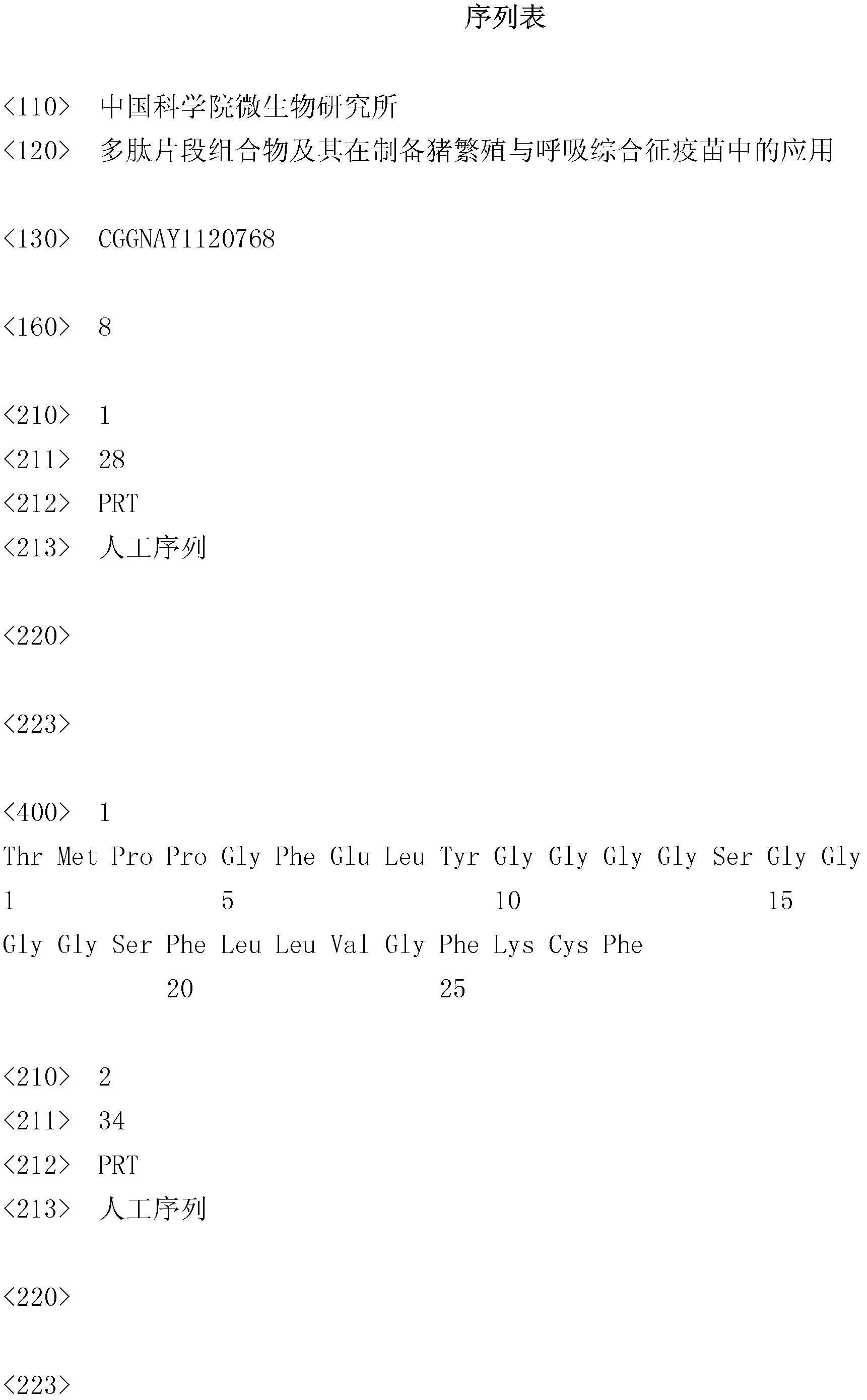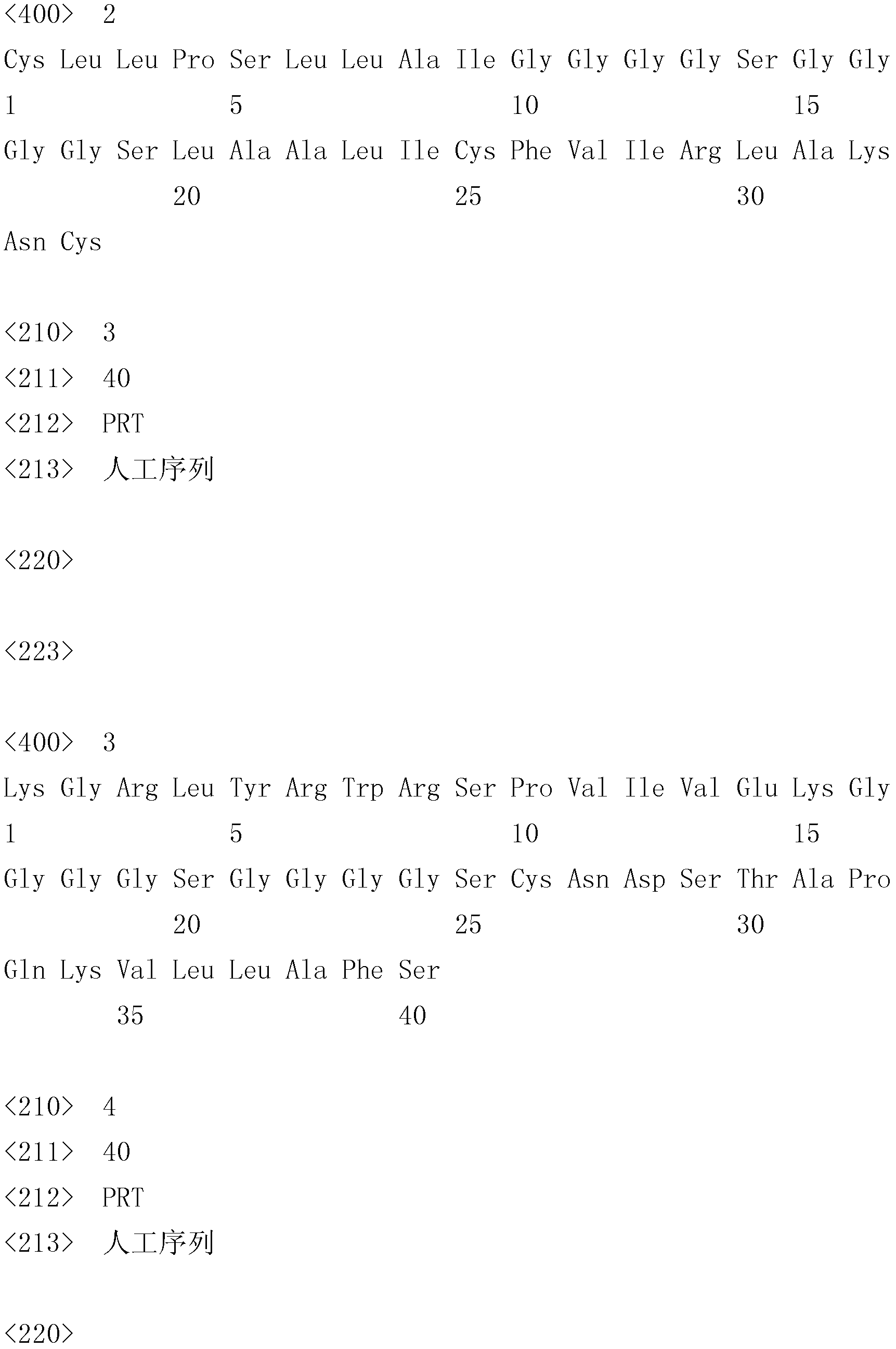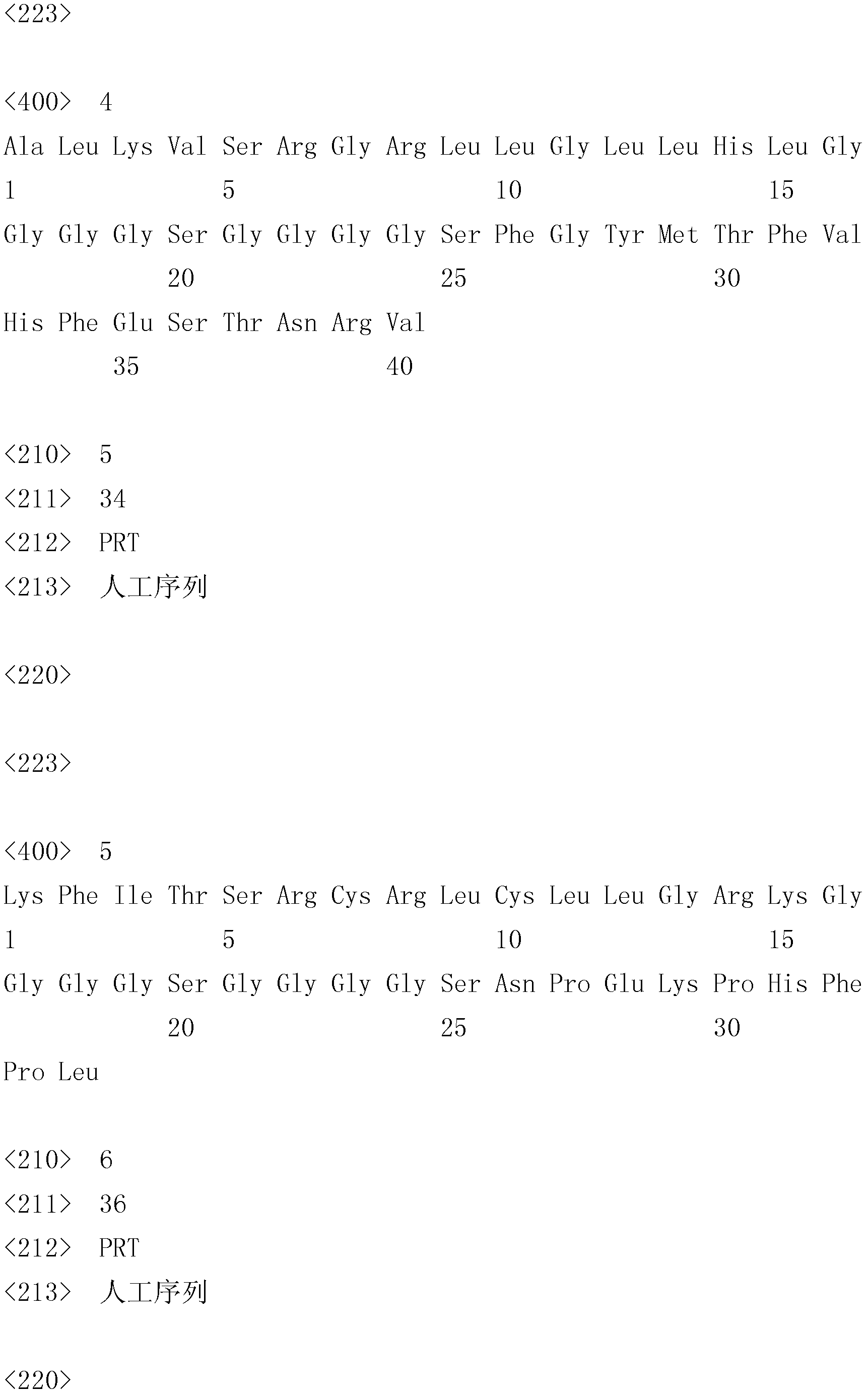Polypeptide fragment composition and application in preparation of porcine reproductive and respiratory syndrome vaccine thereof
A technology of polypeptide fragments and compositions, applied in the field of porcine reproductive and respiratory syndrome vaccine preparation, can solve problems such as difficult to control and eradicate PRRSV, strong virulence, not suitable for piglet immunization, etc., achieve good application prospects, and respond to antigens Variants, effects that are easy to synthesize on a large scale
- Summary
- Abstract
- Description
- Claims
- Application Information
AI Technical Summary
Problems solved by technology
Method used
Image
Examples
Embodiment 1
[0034] Embodiment 1, the synthesis of polypeptide fragment and APP-N protein
[0035] 1. Synthesis of polypeptide fragments
[0036] Design six polypeptide fragments (all T cell epitopes), the sequence is as follows (from nitrogen terminal to carbon terminal):
[0037] Polypeptide I (sequence 1 of the sequence listing): TMPPGFELYGGGGSGGGGSFLLVGFKCF;
[0038] Polypeptide II (sequence 2 of the sequence listing): CLLPSLLAIGGGGSGGGGSLAALICFVIRLAKNC;
[0039] Polypeptide III (sequence 3 of the sequence listing): KGRLYRWRSPVIVEKGGGGSGGGGSCNDSTAPQKVLLAFS;
[0040] Polypeptide IV (sequence 4 of the sequence listing): ALKVSRGRLLGLLHLGGGGSGGGGSFGYMTFVHFESTNRV;
[0041] Polypeptide V (sequence 5 of the sequence listing): KFITSRCRLCLLGRKGGGGSGGGGSNPEKPHFPL;
[0042]Polypeptide VI (sequence 6 of the sequence listing): VRHHFPSEGGGGSGGGGSFSLPTQHTVRLIRATAS;
[0043] The above six polypeptides were chemically synthesized respectively.
[0044] 2. Synthesis of APP-N protein
[0045] APP-...
Embodiment 2
[0057] Embodiment 2, the preparation of vaccine
[0058] 1. Preparation of Vaccine A
[0059] 1. Dilute the polypeptide I, polypeptide II, polypeptide III, polypeptide IV, polypeptide V and polypeptide VI prepared in Example 1 to 1.2 mg / ml with water for injection (sterile water), and then mix them in equal volumes to make an aqueous phase Antigen (the concentration of the 6 polypeptide fragments in the aqueous phase antigen is 0.2mg / ml).
[0060] 2. Dilute the APP-N protein (adjuvant) prepared in Example 1 with water for injection (sterile water) to a protein concentration of 0.2 mg / ml, which is the aqueous phase of the protein adjuvant.
[0061] 3. Under the condition of 6°C (4-8°C is acceptable), mix the water-phase antigen in step 1 and the protein adjuvant in step 2 in equal volumes, and mix and combine at a slow speed of 50 rpm on a mixer After 2 hours, the aqueous phase adjuvant-antigen immunogen (the concentration of APP-N protein is 100μg / ml, the concentration of po...
Embodiment 3
[0071] Embodiment 3, efficacy experiment of vaccine
[0072] 1. Experimental animals
[0073] 50 6-week-old healthy pigs (Landrace pigs, purchased from Changping Animal Experiment Base, Beijing Institute of Animal Husbandry and Veterinary Medicine, Chinese Academy of Agricultural Sciences) were double-negative for PRRSV antigen and antibody.
[0074] Second, the application of vaccines to immunize animals
[0075] The experimental animals were randomly divided into 5 groups, 10 in each group, and the following immunizations were carried out respectively:
[0076] Group 1 (experimental group A): the vaccine A prepared in Example 2 was used for immunization;
[0077] Group 2 (experimental group B): the vaccine B prepared in Example 2 was used for immunization;
[0078] The 3rd group (negative control group): adopt the reference substance A prepared in embodiment 2 to carry out immunization;
[0079] The 4th group (blank control group): adopt the reference substance B prepare...
PUM
 Login to View More
Login to View More Abstract
Description
Claims
Application Information
 Login to View More
Login to View More - R&D
- Intellectual Property
- Life Sciences
- Materials
- Tech Scout
- Unparalleled Data Quality
- Higher Quality Content
- 60% Fewer Hallucinations
Browse by: Latest US Patents, China's latest patents, Technical Efficacy Thesaurus, Application Domain, Technology Topic, Popular Technical Reports.
© 2025 PatSnap. All rights reserved.Legal|Privacy policy|Modern Slavery Act Transparency Statement|Sitemap|About US| Contact US: help@patsnap.com



